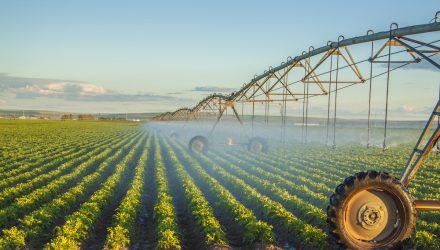While the global economy continues to heal amid a vaccine rollout, demand for raw materials could be rising again, which helps put the VanEck Vectors Natural Resources ETF (HAP) in play for ETF investors.
“The COVID-19 pandemic has adversely hit many economies around the globe,” a Globe Newswire press release stated. “The combat measures like complete lockdown and quarantine to fight COVID-19 have a strong adverse impact on many industries globally, including a portion of the agriculture industry.”
“In the agriculture sector, the fertilizer market has registered a strong slowdown in sales in the first quarter of 2020 due to the disturbance in logistics and transportation,” the release added. “Along with logistics and transportation, the fertilizer market has registered interruptions in the entire value chain of the sector from raw materials supply to manufacturing, packaging, and distribution.”
HAP, which is up over 100% the past year, seeks to replicate as closely as possible the price and yield performance of the VanEck® Natural Resources Index. The fund normally invests at least 80% of its total assets in securities that comprise the fund’s benchmark index.
The index is comprised of publicly traded companies engaged (derive greater than 50% of revenues from applicable sources) in the production and distribution of commodities and commodity-related products and services in the following sectors: 1) Agriculture; 2) Alternatives (Water & Alternative Energy); 3) Base and Industrial Metals; 4) Energy; 5) Forest Products; and 6) Precious Metals.
“The fund holds primarily giant and large-cap companies, which additionally improve the risk-adjusted returns gained from commodities exposure,” ETF Database analysis explained. “HAP is a nice option for investors looking to bet on increasing demand for raw materials as the global economic recovery picks up speed.”
Growth in the Fertilizer Industry
One of the sub-sectors of the raw materials industry that could see strong growth is fertilizer. According to the research report, “Organic Fertilizers Market by Source (Animal, Plant, Mineral), Form (Dry, Liquid), Application (Broadcasting, Fertigation, Foliar Application), Crop Type (Cereals & Grains, Fruits & Vegetables, Oilseeds & Pulses, Turf & Ornaments) and Geography- Global Forecast to 2027”, published by Meticulous Research®, the organic fertilizers market is projected to reach $15.9 billion by 2027.
“Also, in terms of volume, the organic fertilizers market is expected to grow at a CAGR of 6.6% from 2020 to 2027 to reach 33,829.2 KT by 2027,” the Globe Newswire release added. “An increase in demand for organic food, increasing awareness about environmental safety, advances in organic fertilizer’s manufacturing process, and huge organic waste availability are the primary growth drivers for this market. However, the high demand for inorganic (synthetic) fertilizers hinders the growth of this market to some extent.”
For more news and information, visit the Tactical Allocation Channel.








